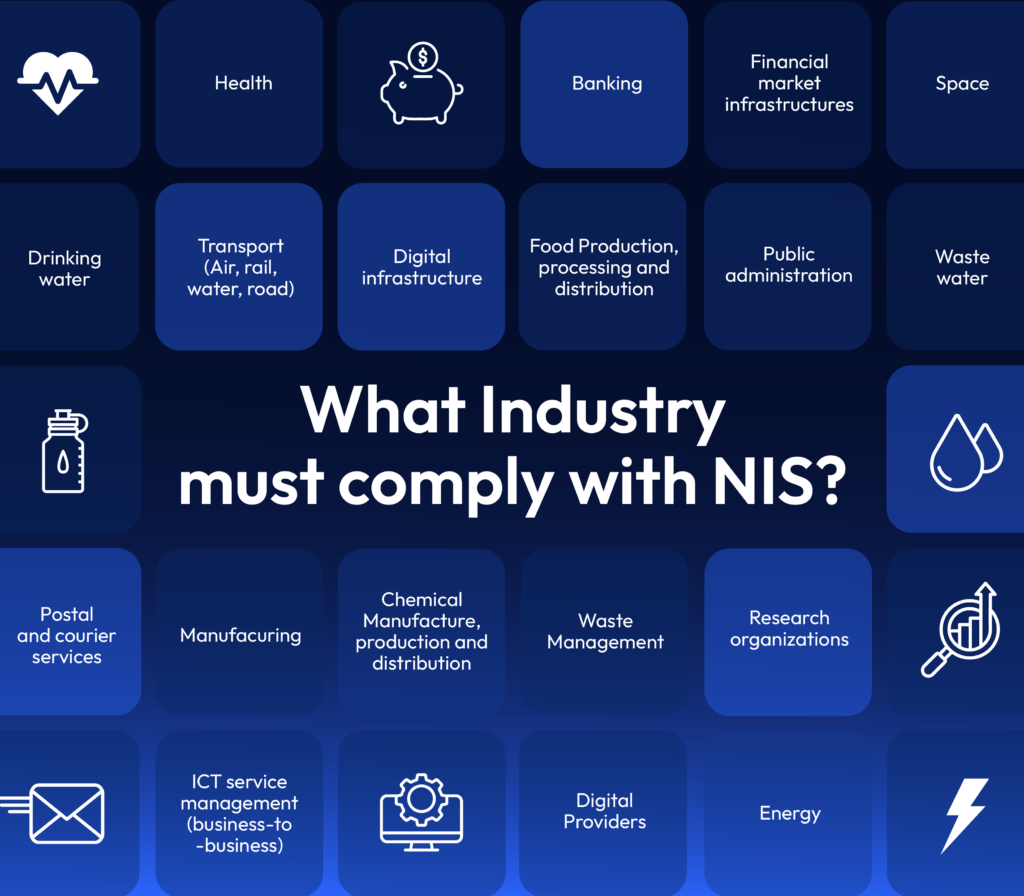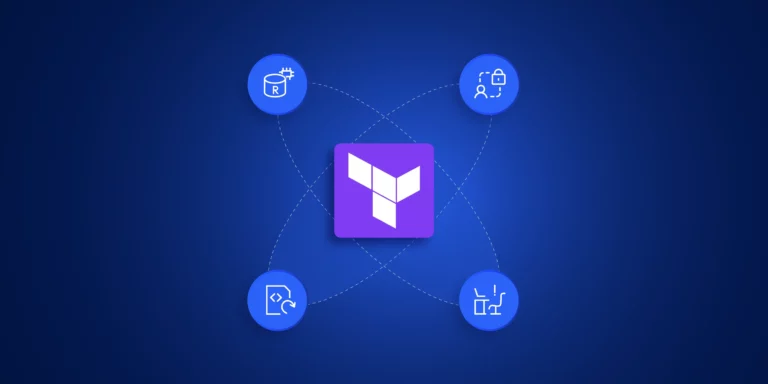If your organization provides essential or important services in the EU, you know that you need to comply with the recently revised Network Information Services Directive – commonly known as NIS2. However, you might be less clear on where DevOps supports NIS2 compliance. In this blog, we will explore how DevOps can help businesses follow NIS2 rules. We will also discuss why infrastructure automation is important.
What is NIS2 and who must comply?
NIS2 is an EU-wide regulation. It aims to improve the cybersecurity of organizations that provide “essential” or “important” services. It establishes minimum cybersecurity risk management measures and policies for network and information system security. These cover all areas of cybersecurity. This includes incident handling, business continuity, and supply chain security. It also covers identity and access management, employee training, and encryption.
The list of in-scope sectors is long. It includes healthcare, banking, and energy. It also covers digital infrastructure providers like AWS, Google Cloud, and Microsoft Azure.

Why DevOps Is Central to NIS2 Compliance and EU Cyber Resilience
NIS2 enhances the organization’s accountability for operating responsibly and increases its liability in the event of a cyber attack or other cyber incident. The full regulation is wide-ranging, but NIS2 compliance factors for DevOps include:
- Companies must report breaches within 24 hours of an incident. They need to find problems, understand what is happening, and report quickly. DevOps teams must therefore undertake monitoring and reporting responsibilities.
- Real-time visibility into infrastructure changes: NIS2 compliance requires organisations to maintain close control over infrastructure design, deployment, and changes, so it’s essential that DevOps has full visibility and control over cloud environments.
- Proactive access control and robust privilege management: Only authorised personnel should have access to network information systems on a least-privilege basis. This is especially important for employees in DevOps teams with infrastructure management roles.
Many companies rely on cloud-native environments. This puts DevOps and platform engineers at the center of NIS2 compliance. The amount of work is high, so manual workflows are not sufficient. That’s where Infrastructure as Code (IaC) and automation come in.
How IaC and Automation Help DevOps with NIS2 Compliance
Infrastructure as Code (IaC) tools like Terraform help DevOps teams automate and manage infrastructure. They work with providers like AWS, Azure, and Google Cloud. They eliminate manual work and allow teams to manage infrastructure in a consistent, repeatable, and scalable way. This helps to achieve NIS2 compliance, but it isn’t the whole solution. To really put DevOps in control of NIS2 compliance, teams also need:
IaC Governance
Provisioning new resources should be automatically governed by NIS2 compliant policy, ensuring all additions and changes to the environment meet secure configuration requirements.
IaC Drift Detection
We need to keep checking that the cloud matches the code. This helps us avoid losing NIS2 compliance.
Disaster Recovery for NIS2: Infrastructure Rollback After Incidents
NIS2 emphasizes organizational resilience after an incident. This is just as important for cloud infrastructure as for other operational systems. DevOps need to be able to rollback infrastructure to known safe configurations after an incident.
Audit-Ready IaC for NIS2 Breach Reporting and Change Tracking
All changes must be approved and tagged. This allows for audits when needed. It also helps report any incidents quickly and with complete information.
That’s where IaC automation platforms like ControlMonkey provide DevOps with automated NIS2 compliance capabilities. By enforcing governance and visibility around Terraform, they turn static IaC into continuous compliance.
5 NIS2 Compliance Requirements Solved with IaC Automation
| NIS2 Compliance Requirement | Operational Challenge | IaC Solution in Practice | Tools & Frameworks |
| Maintain real-time visibility and rollback to build resilience and minimise the impact of incidents. | Manual cloud changes create drift and audit blind spots. Cloud-to-code integrity is compromised causing increased cost and risk. | Auto-detect drift and revert unauthorized changes to match IaC baseline. Achieve continuous cloud-to-code integrity. | ControlMonkey drift detection and remediation for Terraform (Product) Terraform State Locking (Native) AWS Config (Native) |
| Manage network risk by enforcing secure configurations across environments. | Teams skip encryption, region, or tagging policies. Non-compliant resources go into production. | Validate using policy-as-code before deployment. | ControlMonkey Quality Gates (Product) Open Policy Agent (OPA) (Open Source) HashiCorp Sentinel (Product) |
| Enable fast breach response and recovery. Provide configuration evidence in mandatory incident reports. | Manual rebuilds result in slow response times, increasing time to recovery, and delaying incident reporting. | Use automated snapshots and IaC state history for rollback and forensics | ControlMonkey Cloud DR (Product) Terraform Plan Logs (Native) AWS CloudTrail (Native) |
| Implement robust identity and access management and prevent over-permissive access or privilege escalation. | Over-broad IAM roles are deployed by mistake. | Block IAM violations with pre-merge checks and RBAC policy templates. | OPA Rego Policies (Open Source) tfsec (Open Source) Terraform AWS IAM Modules (Open Source) |
| Ensure traceable, approved changes in shared environments for audit and reporting purposes. | Failure to implement a robust approval system or and/or tagging leads to audit failures and unmanaged risk. | Enforce Git-based workflows with required approvals and infrastructure tagging. | GitHub/GitLab PR Reviews (Product) ControlMonkey Governance (Product) |
IaC Automation for NIS2 Compliance: Putting DevOps in Control
Achieving NIS2 cloud compliance at scale demands IaC automation. Without it, DevOps workloads will escalate to an impossible degree. By deploying a coherent suite of IaC automation solutions, DevOps can fulfil NIS2 compliance obligations without compromising their workflow.
To learn more about how ControlMonkey can put your DevOps team in full control of NIS2 Compliance, book an intro call today.

FAQs
NIS2 compliance means following the cybersecurity and risk management rules in the European Union’s NIS2 Directive. It applies to essential and important entities across sectors like energy, finance, healthcare, digital infrastructure, and more.
DevOps teams are on the front lines of NIS2 compliance. The directive demands secure defaults, change traceability, and fast rollback — all dependent on how infrastructure is built and shipped.
Key takeaways for DevOps:
- Manual provisioning is a risk — ClickOps breaks compliance
- IaC must be governed — use policy-as-code and version control
- Drift, rollback, and audit trails must be automated
- CI/CD pipelines need compliance gates
Tools like ControlMonkey help enforce these controls automatically within your Terraform workflows.
Yes, but not alone. Terraform codifies infrastructure, but you still need drift detection, policy enforcement, and audit workflows to meet NIS2. That’s where tools like ControlMonkey come in.











